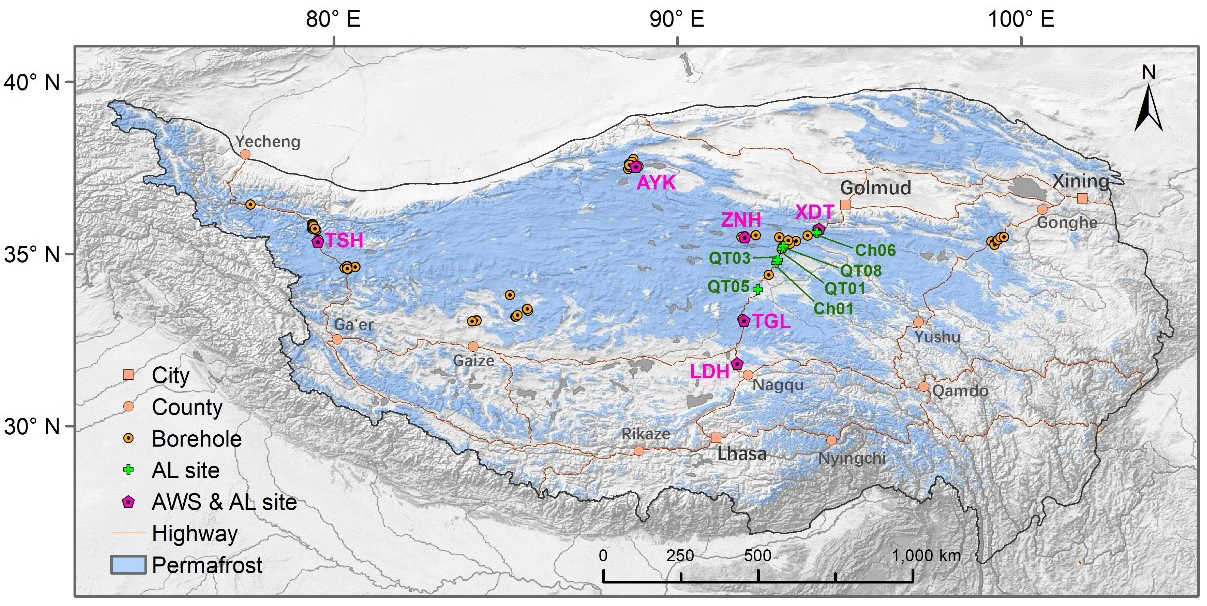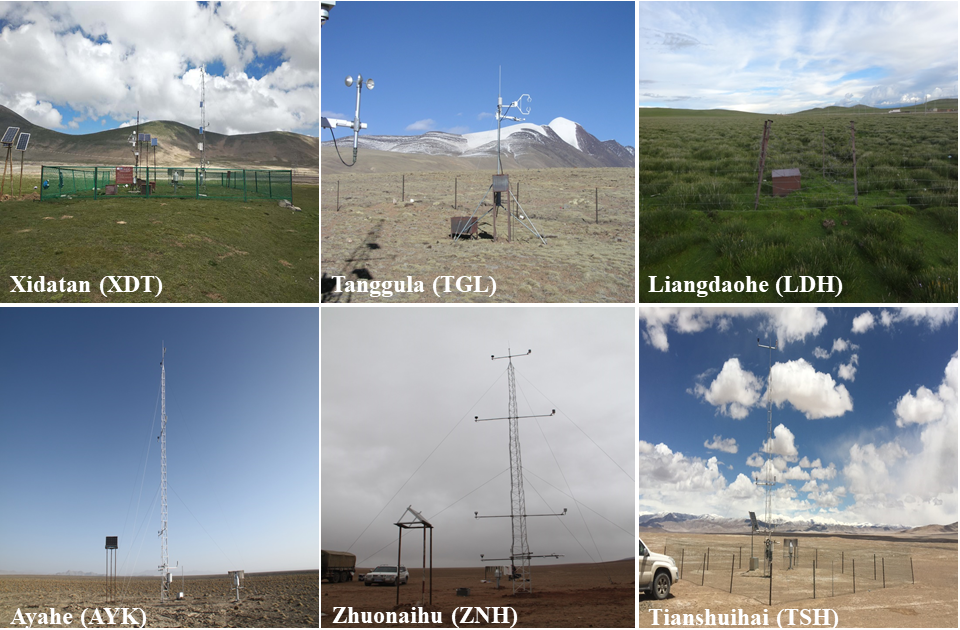Recently, Professor ZhAO Lin's team published a data paper entitled "a synthesis dataset of permafrost thermal state for the Qinghai – Tibet (Xizang) Plateau, China" on Earth System Science Data (IF = 11.33), introduced the comprehensive observation dataset of Permafrost on the Qinghai-Tibet Plateau (QTP) accumulated by the research team for a long time at Golmud station, and discussed the basic characteristics of permafrost change on the QTP under the background of climate change. The comprehensive monitoring dataset of permafrost in QTP (2002-2018) has been published online at the Tibetan Plateau/Third Pole Environment Data Center (https://data.tpdc.ac.cn), which can be accessed by users.
The Qinghai-Tibet Plateau is the most widely distributed permafrost region in the world at low and middle latitudes, and numerous studies have shown that the presence and changes of permafrost on the QTP strongly affect the hydrological, ecological, and climatic systems of the region and the world. However, the collection of long-term and high-resolution data over the permafrost regions of QTP is challenging due to the complex terrain, severe weather, and inconvenient access. This not only severely limits the research and understanding of many aspects of climate, environment, and permafrost in this region, but also severely limits the development of remote sensing inversion algorithms adapted to the region, the improvement and simulation of various land surface and even Earth system models. It also affects the economic development of the region and the planning of national strategies.
Over the past three decades, Prof. ZHAO Lin has led a team of permafrost investigation and monitoring on the ATP to conduct long-term continuous monitoring and large-scale field investigations of permafrost on the QTP, carried out comprehensive research on the change mechanism, model simulation and ecological effects of permafrost water and heat conditions, standardized the methods of permafrost field investigation and positioning monitoring, and established a leading permafrost comprehensive monitoring network in the world; A large number of valuable monitoring and first-hand investigation data have been obtained. The data released this time is the first and most systematic dataset of permafrost for the QTP in the world.
For the first time, the database systematically integrates the long-time series observation data of 6 automatic meteorological stations, 12 active layer sites and 84 boreholes. In the process of data collection and processing, all observation data have been strictly controlled. The dataset will be released to scientists with multi-disciplinary backgrounds (e.g., cryosphere, hydrology, ecology and meteorology), which will greatly promote the validation, development and improvement of hydrological model, land surface process model and climate model of the QXP.

Figure 1. The permafrost monitoring networks on the QTP. AL: active layer; AWS: automatic meteorological station.

Figure 2. The six comprehensive meteorological stations.
This work was supported by the Second Tibetan Plateau Scientific Expedition and Research (grant no. 2019QZKK0201), the National Natural Science Foundation of China (grant no. 41931180,42071094,41701073).
Article:
Zhao, L., Zou, D., Hu, G., Wu, T., Du, E., Liu, G., Xiao, Y., Li, R., Pang, Q., Qiao, Y., Wu, X., Sun, Z., Xing, Z., Sheng, Y., Zhao, Y., Shi, J., Xie, C., Wang, L., Wang, C., & Cheng, G. (2021). A synthesis dataset of permafrost thermal state for the Qinghai–Tibet (Xizang) Plateau, China. Earth System Science Data, 13(8), 4207–4218. doi: 10.5194/essd-13-4207-2021.
Article available at:
https://essd.copernicus.org/articles/13/4207/2021/
Data available at:
Contact Support
Links
National Tibetan Plateau Data CenterFollow Us

A Big Earth Data Platform for Three Poles © 2018-2020 No.05000491 | All Rights Reserved
|  No.11010502040845
No.11010502040845
Tech Support: westdc.cn